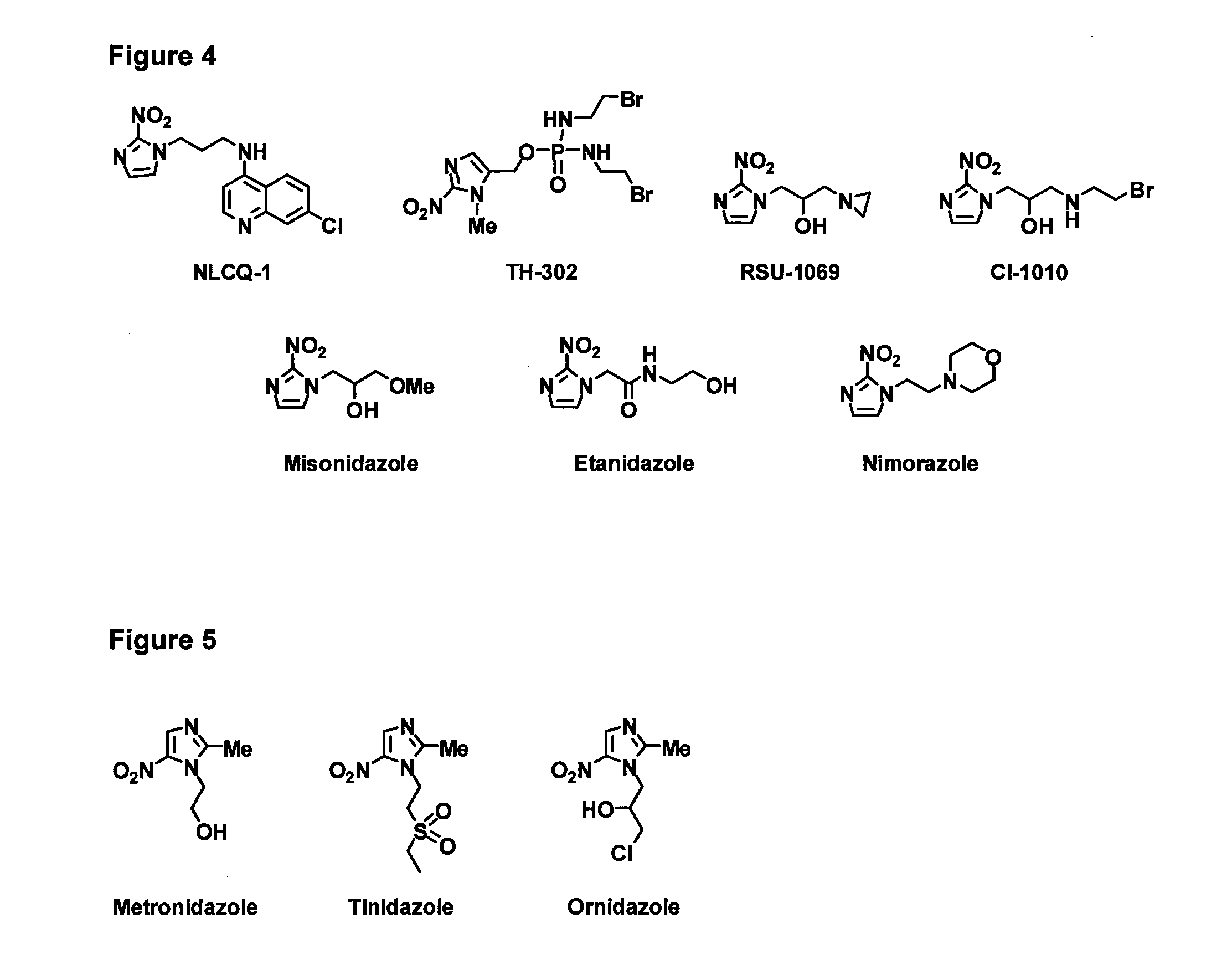Bacterial nitroreductase enzymes and methods relating thereto
a technology of nitroreductase and enzymes, applied in the field of bacteria nitroreductase enzymes, can solve the problems that cannot be applied to all organs of the body in concert, tissue biopsies and other invasive approaches to imaging tumour-tropic biological vectors, and cannot be applied to all organs of the body in one direction, so as to achieve minimal harm to surrounding cells, minimal bystander effect, and minimal effect of
- Summary
- Abstract
- Description
- Claims
- Application Information
AI Technical Summary
Benefits of technology
Problems solved by technology
Method used
Image
Examples
examples
Material and Methods
[0331]Purified Enzyme Kinetics:
[0332]For EF5 and other 2-NI bio-imaging agents, steady-state enzyme kinetics with purified NTRs were assessed spectrophotometrically at 340 nm to monitor NTR catalyzed NADPH oxidation. The molar extinction co-efficient of NADPH (6,220 M−1 cm−1) was used for the calculation of enzyme activity. For PR-104A, reduction was measured directly at 400 nm (ε=6,000 M−1 cm−1); and for CB1954, reduction was measured directly at 420 nm (ε=1,200 M−1 cm−1). Reactions were performed in 100 μl in UVettes (Eppendorf), using the 2 mm light path length. Reactions contained 10 mM Tris-Cl (pH 7.0), 4% DMSO, 0.25 mM NADPH and varying EF5 or PR-104A concentrations. Reactions were initiated by addition of 10 μl enzyme and changes in absorbance were measured for 15 s (during linearity). For calculation of Km and kcat, substrate concentrations were varied from ˜0.2×Km to 5×Km. Non-linear regression analysis and Michaelis-Menten curve fitting was performed us...
PUM
| Property | Measurement | Unit |
|---|---|---|
| Fraction | aaaaa | aaaaa |
| Fraction | aaaaa | aaaaa |
| Fraction | aaaaa | aaaaa |
Abstract
Description
Claims
Application Information
 Login to View More
Login to View More - R&D
- Intellectual Property
- Life Sciences
- Materials
- Tech Scout
- Unparalleled Data Quality
- Higher Quality Content
- 60% Fewer Hallucinations
Browse by: Latest US Patents, China's latest patents, Technical Efficacy Thesaurus, Application Domain, Technology Topic, Popular Technical Reports.
© 2025 PatSnap. All rights reserved.Legal|Privacy policy|Modern Slavery Act Transparency Statement|Sitemap|About US| Contact US: help@patsnap.com



